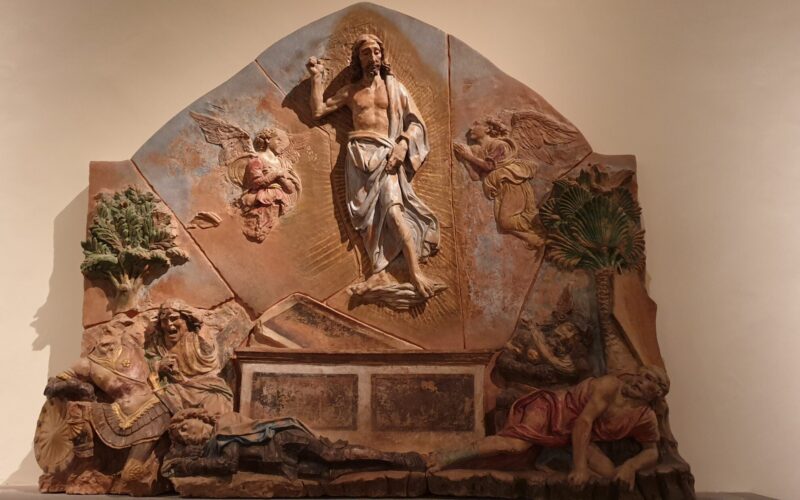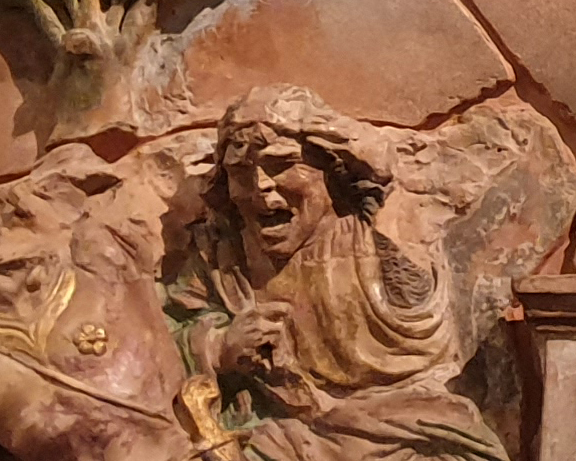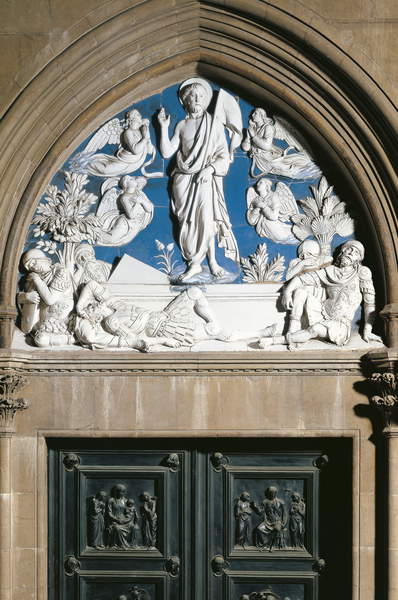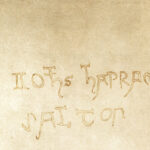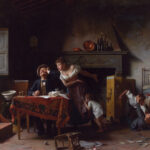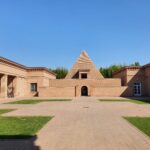In the historic center of Florence, within the venerable walls of the Bargello Museum, lies a priceless treasure of art: Andrea del Verrocchio’s “Resurrection of Christ.” This emblematic work of the Italian Renaissance continues to be a masterpiece, despite its less-than-ideal state of preservation. Its absence from the exhibition “Verrocchio, Master of Leonardo” at Palazzo Strozzi, which concluded on July 14, 2019, was a significant loss for art lovers and scholars.
The risk associated with transporting the work, given its fragility, made the decision not to move it a wise yet painful one. It’s impossible not to think of the fate of Antonio Canova’s bas-relief “The Killing of Priam,” which was irreparably damaged during transport for an exhibition. These situations highlight the critical importance of conservation in the museum context, a continually relevant topic in debates on the management of historical artworks.
Nonetheless, for those wishing to delve deeper into Verrocchio’s artistic universe, a visit to the Bargello Museum becomes essential. Known as Leonardo da Vinci’s master, Verrocchio exerted a lasting influence on the art world, training generations of artists who perpetuated his innovative spirit.
The “Resurrection of Christ,” discovered at the beginning of the 20th century and restored despite being found in numerous fragments, offers a unique representation. At its center, the risen Christ is surrounded by angels, with Roman guards witnessing the miracle, according to the apocryphal Acts of Pilate. This interpretation diverges from the tradition of depicting the guards as asleep, a detail respected, for example, by Luca della Robbia in his relief for the portal of Santa Maria del Fiore.
Verrocchio may have drawn inspiration from Della Robbia’s lunette, but the emotional intensity of his glazed terracotta, especially evident in the anguished face of an awakened soldier, demonstrates a profound ability to capture extreme human moments in the presence of the divine and the incomprehensible.
This analysis not only highlights Verrocchio’s artistic mastery but also the potential impact the “Resurrection of Christ” could have had at the Palazzo Strozzi exhibition. Had it been included, this work would undoubtedly have enriched the exhibition, adding another layer of historical and artistic depth. Verrocchio’s ability to merge sculptural technique and emotional narrative in a single terracotta fragment would have offered visitors not just an art history lesson, but a window into the Florentine Renaissance, influencing perceptions and critical dialogues.
While the work continues to reside in Florence, it offers visitors not just a vision, but an experience that invites reflection on the power of art to evoke deep and universal emotions. Every detail of the work, from the expressiveness of the faces to the dynamics of the figures, is a silent witness to Verrocchio’s genius, speaking through the centuries. The tangible presence of the divine and the human intertwines, prompting the observer to reflect on their own existence and the great questions of life and death.
Ultimately, Andrea del Verrocchio’s “Resurrection of Christ” remains a focal point for anyone interested in the Renaissance and the impact of this exceptional master. The work is a continuous source of inspiration, testifying to the innovation and passion that defined an era of extraordinary artistic richness. For art lovers, scholars, and visitors, Verrocchio’s work remains a powerful symbol of the talent and creativity that flourished in Italy during the Renaissance, a period that shaped the course of Western art history.

